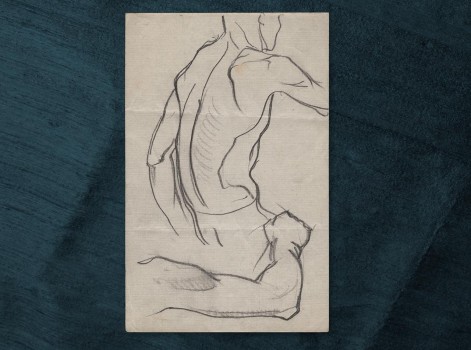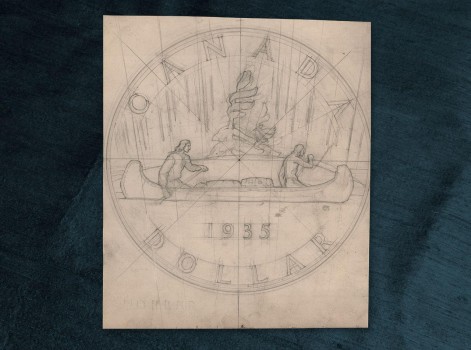Coin designs of Emanuel Hahn
An Emanuel Hahn First World War memorial design in Lindsay, Ontario. (Wikimedia Commons, Richard BH, Hamilton, ON)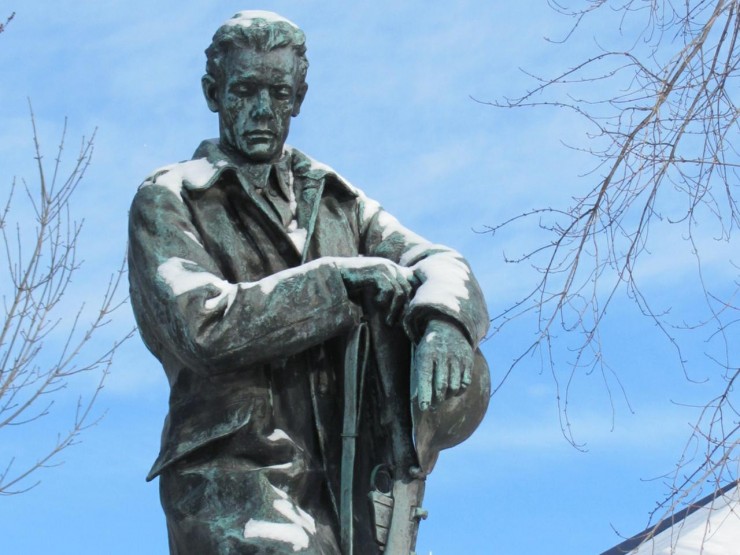
Emanuel Hahn was a celebrated Canadian sculptor whose work can be seen in the monuments of many Canadian cities. Born in Germany in 1881, Hahn immigrated to Canada with his family at the age of 7. Along with medals and a number of significant war memorials, Hahn designed some of Canada’s most distinctive and iconic coins. The voyageur silver dollar, the Bluenose dime, the caribou 25 cent piece and the 1939 silver dollar commemorating the Royal Visit of King George VI and Queen Elizabeth were all Hahn designs.
Pencil drawing by Emanuel Hahn sketching features proposed for the back of the 1935 silver dollar. 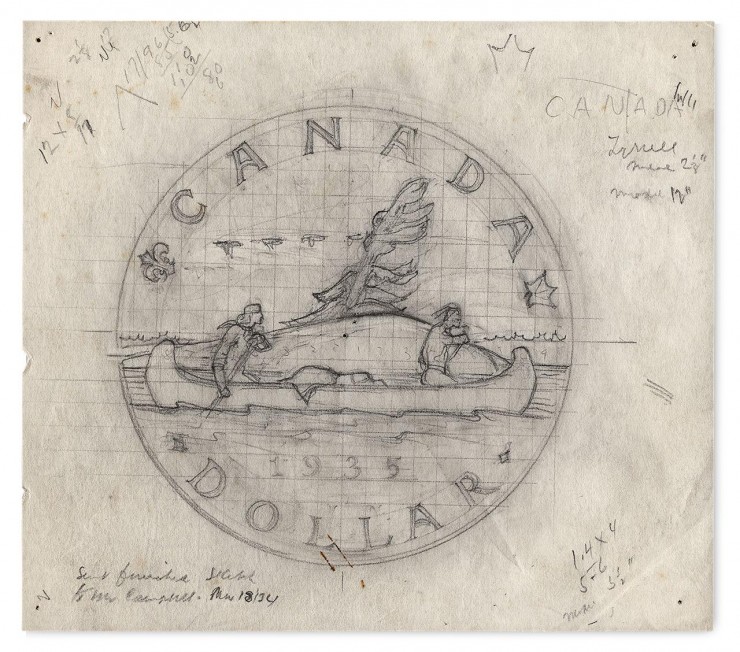
(NCC 1963.059.015.004)
In 1934 the Department of Finance invited Emanuel Hahn to submit a design for a silver dollar commemorating the silver jubilee of the reign of King George V. Hahn corresponded with the Royal Mint in London and the Royal Canadian Mint to gain insight into the process of minting a coin before submitting a drawing depicting a voyageur and a First Nations man paddling a canoe. To ensure accuracy, Hahn studied the designs of traditional canoes and the paintings of Frances Anne Hopkins. Hahn’s design was approved with only a few minor changes and was used as the standard pattern for the Canadian silver dollar until the introduction of the ‘Loonie’ in 1987.
Following the success of the voyageur silver dollar, Hahn was among several artists invited to submit designs for new Canadian coinage to be released in conjunction with the accession of King George VI, in 1937. Hahn produced no less than 16 sketches. His caribou (proposed for both the nickel and the quarter) and his Bluenose were both selected for the new coins. All of the designs put into circulation in 1937 are still to be found on Canada’s circulating coinage today. Hahn left an impressive mark on Canadian currency and all Canadians can be proud to have a ‘Hahn original’ in their pockets.
Reverse of 1935 silver dollar designed by Emanuel Hahn. 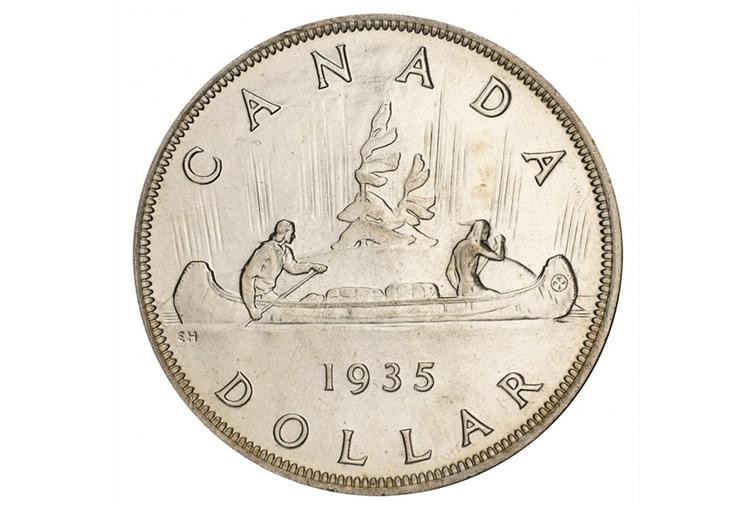
(NCC 1978.058.285b1)
Emanuel Hahn’s legacy of coins, drawings, plaster models and correspondence is preserved in the National Currency Collection of the Bank of Canada.
The Museum Blog
A Field Trip to Montréal and the MTM Auction: 1
By: Paul S. Berry
The sale room was a hive of activity. About 20 people sat at tables scrutinizing lots, heads bent down with magnifying glasses pressed close to their faces.
Royal Canadian Numismatic Association
By: David Bergeron
The 63rd annual convention of the Royal Canadian Numismatic Association (RCNA)—Canada’s money collector show—was held in Ottawa from 20-24 July 2016.
Gold Rush! and Mining the Miners
By: Graham Iddon
Mining the Miners is our third temporary exhibition at the CMH (we reopen in 2017) and it is indeed about the Klondike gold rush. It’s always nice to be able to dovetail our exhibits with those of our host.
New Acquisitions
By: David Bergeron
When I was a kid, I liked going to Canadian Tire with my dad because he gave me the Canadian Tire money that he would receive along with his change.
Repairing Steel Dies
Before they were to be placed in collection storage, these broken dies were evaluated for further conservation treatment. Ultimately, the decision was made to repair the breaks.New Acquisitions
By: Paul S. Berry
In May 2013, staff of the Bank of Canada Museum visited BABN and were able to select for the National Currency Collection more than 650 steel dies (small, engraved metal or “intaglio” plates) and other production tools formerly used by the company to prepare the intaglio printing plates.
A bank NOTE-able Woman II
By: Graham Iddon
On 15 April, the public consultation to select an iconic Canadian woman to appear on a bank note closed. Over 26,000 nominations were received following the Bank of Canada’s open call—a great success.
New Acquisitions
By: Paul S. Berry
Canadians, on occasion, have used money as a signboard for political protest, a platform for social commentary and even as a handy notepad on which to record fleeting thoughts before they are lost.
A bankNOTEable Woman
By: Graham Iddon
Representing significant women on national currency is gaining momentum all over the world. At least 12 countries currently feature historically notable women on their money…
Museum Reconstruction - Part 4
By: Graham Iddon
It seems a pretty strange building but now it has a solid roof, glass walls and doors. Doors? Ah, there’s your clue. It’s no skateboard park—it’s the entrance portico for the Bank of Canada Museum.
